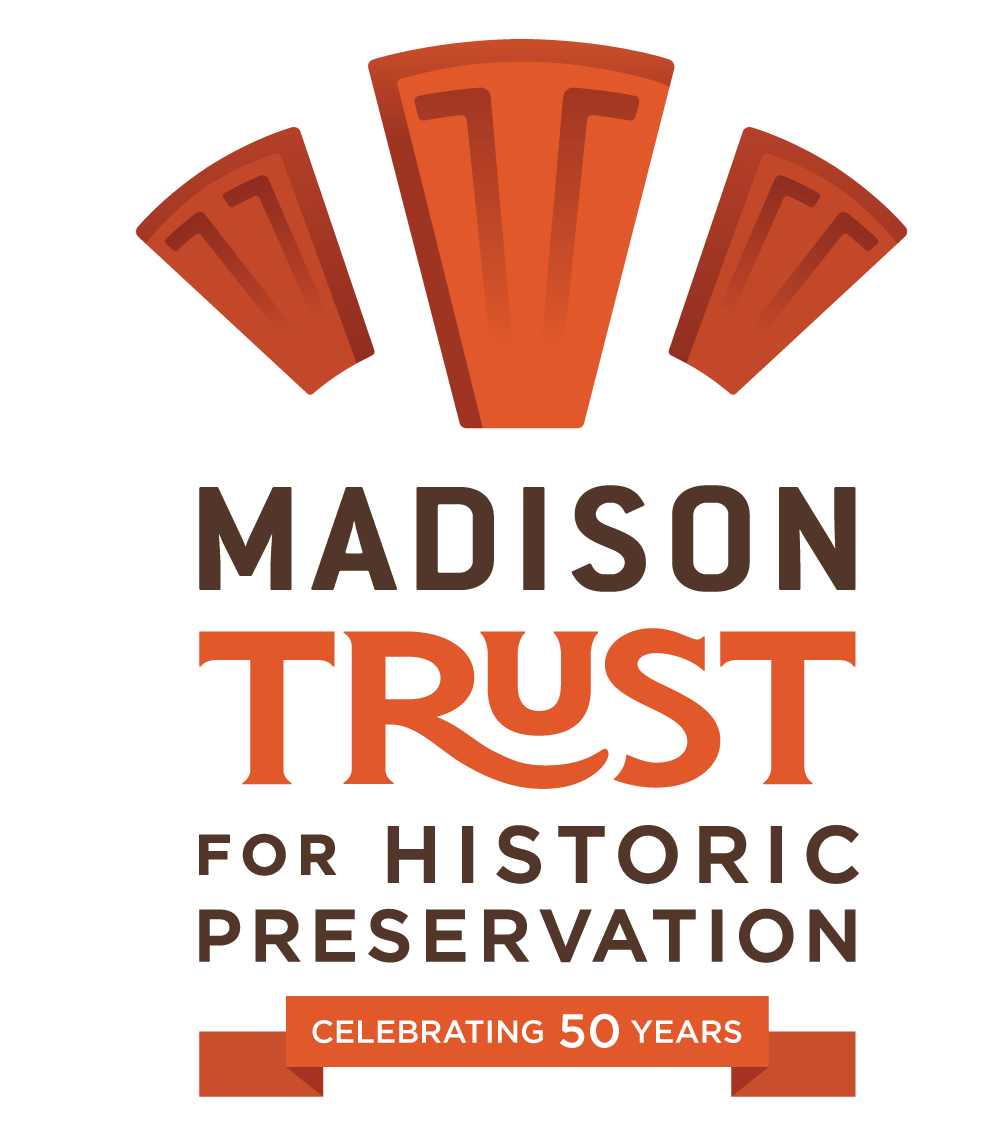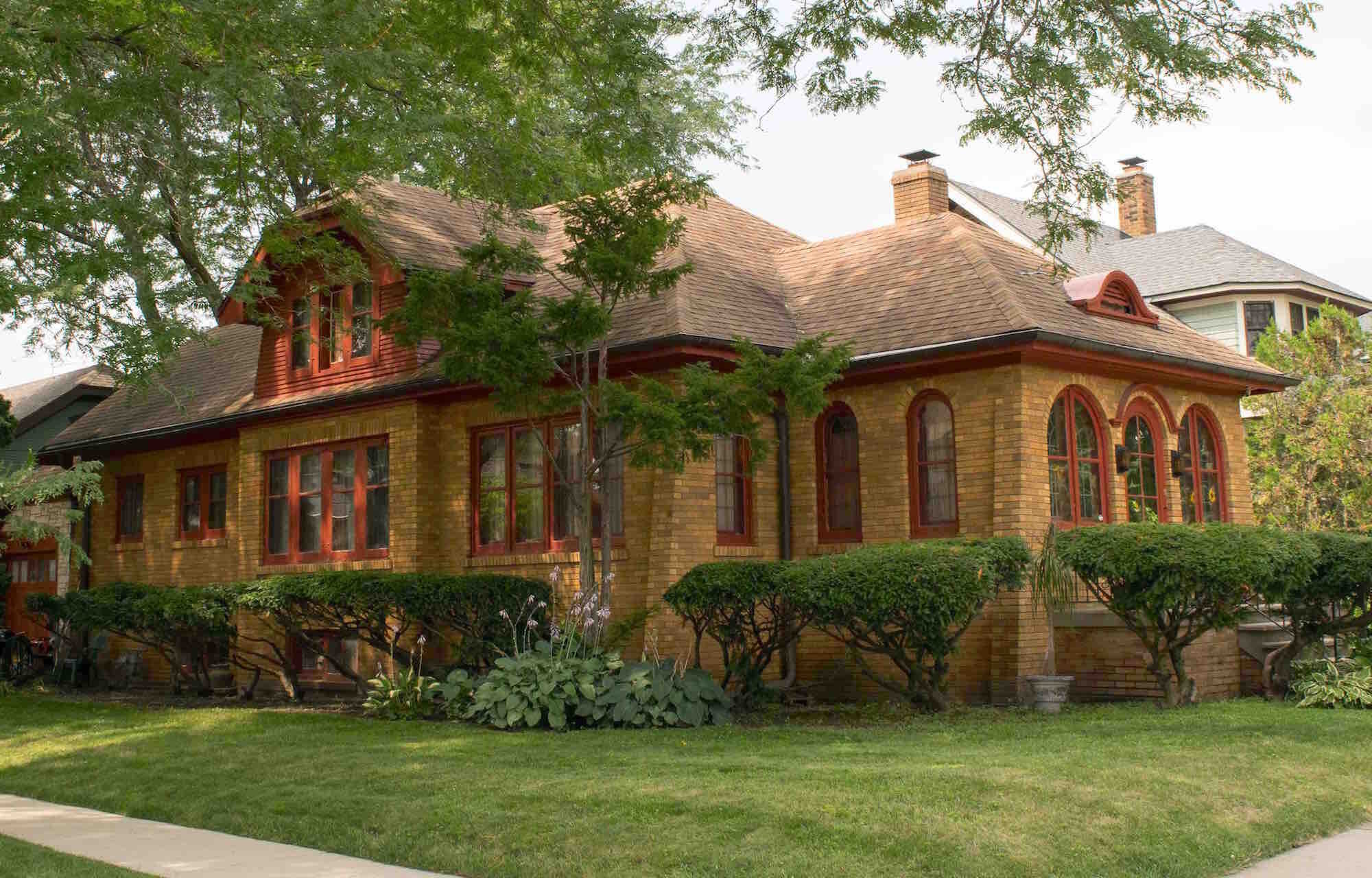Make it a Bungalow Summer
By Michael Bridgeman
The 2021 season of Madison Trust for Historic Preservation historic architecture walking tours begins May 27 and tickets are now on sale. Why not make it a Bungalow summer?
After all, bungalows are ubiquitous. That also means they can be overlooked, even though there are good reasons to give them your attention.
“The bungalow was the most influential architectural design to come out of the Arts & Crafts movement,” architectural historian Jim Draeger said in his January online presentation for the Madison Trust.
Bungalows were built nationwide in cities, small towns, and on rural farmsteads. There are notable regional variations like the Chicago bungalow.
Bungalows were inexpensive and easy to build. While there are elaborate bungalows designed by architects, most were built for working class and middle class families by local builders who turned to numerous low-cost sources for complete plans and components. Buyers could even have a complete house kit delivered to the site by Sears-Roebuck and others.
Bungalows appealed to early 20th century families and lifestyles with simple, open plans that were a dramatic shift from Victorian fussiness. Modern systems like electricity, plumbing and heating became standard during the bungalow boom.
You can sample the bungalows Madison has to offer by taking several of our scheduled summer tours or booking a private tour through the website.
A row of bungalows faces Rutledge Street, part of a concentration of cozy houses built nearly 100 years ago that are featured in the Madison Trust’s Marquette Bungalows tour. (Photo: Michael Bridgeman)
At the top of the list is the Marquette Bungalows tour. You’ll find more bungalows on our Orton Park and Westmorland tours, which are on this summer’s schedule. To see more bungalows you can arrange a private tour of Westmorland or our new Prospect & Castle Place tour.
Bungalow Basics
While the word “bungalow” has its roots in Hindi, in this country it usually describes a particular kind of house that was popular from about 1900 to 1930. “In its broadest sense, bungalow is a conceptual term,” writes Gerald Foster in American Houses: A Field Guide to the Architecture of the House (2004). It refers, “not to a specific type or style of house but to an early 20th-century architectural notion that suggested simple, informal living.”
The 1915 catalog from the Curtis Company of Clinton, Iowa, offered plans and millwork for bungalows and other popular house styles. Publications like these helped make bungalows popular and affordable for middle class homeowners. (Image: Internet Archive, building technology heritage library)
The rise of the bungalow was propelled by the American Arts and Crafts movement, as Diane Maddex explains in Bungalow Nation (2003): “Between 1903, when the term ‘Craftsman bungalow’ entered the lexicon, and 1905, when ‘California bungalow’ joined it, the bungalow went from being a summer refuge with amorphous features to a house type with nearly universally recognized attributes: one or one-and-one-half stories with a low, sloping roof, an open plan inside, and a front porch tying it to nature.”
The Verdun model from the Curtis Catalog is a simplified Craftsman bungalow with a typical floor plan. A small entry porch leads directly to the living room which is open to the dining room. Two bedrooms and a bathroom on the left side of the plan are connected by a small hallway. (Image: Internet Archive, building technology heritage library)
Marquette Bungalows Tour
This tour is unique among the Madison Trust’s summer itineraries. It’s concentrated in two blocks, nearly all of the houses were erected by the same builder, and they were all constructed between 1924 and 1929. Craftsman designs dominate, but there’s there’s some diversity in style and form. Most exteriors are clad in wood with a few in brick. Four of the houses were designed as duplexes. This neighborhood—a local historic district—is a great place to see lots of bungalows on a single tour.
The Daniel and Frances Holland House (1925) is one of the few brick-clad bungalows in the Marquette Bungalows historic district. (Photo: Jennifer Gurske)
The Anton and Mary Kubicek House (1926) was built as a duplex with Craftsman features and jerkinhead roofs. (Photo: Jennifer Gurske)
Orton Park Tour
You’ll see a smaller concentration of bungalows in the Orton Park neighborhood, where developer Harvey Nichols built eight houses—four identical foursquares on Rutledge Street and four identical bungalows behind them on Florence Court. The bungalows have hip roofs with front-facing dormers; their rear elevations face Lake Monona.
Three of four bungalows built in 1914 are visible in this view of Florence Court near Orton Park. The porch on the house was probably enclosed at a later time. (Photo: Michael Bridgeman)
Westmorland Tour
This is one of the Madison Trust’s mostly stylistically diverse tours with everything from a converted barn to Frank Lloyd Wright’s first Usonian house. The lineup includes a bungalow built by Henry Meyer as a home for his own family that uses a side-gabled plan with a roof that sweeps low to cover the front porch.
Side-gabled bungalows like the Henry and Mary Meyer House (1910) are almost as common as those whose gables face the street. Placing a dormer over the porch is typical of this form. (Photo: Michael Bridgeman)
Vilas Neighborhood Tour
One of Madison’s most distinctive bungalows is found on this west side walking tour that can be scheduled as a private tour. The Cora Tuttle House (1909) is perhaps the most “California” of the bungalows in Madison. When Tuttle designed it as her own residence she was the only woman designing buildings in the city. She had no formal architectural training, but that was no impediment to her creating about 15 houses in Madison including four others near her own home. The new Prospect & Castle Places Tour (see below) features more of her bungalows.
The Cora Tuttle House (1909) has exposed rafters and a front-facing gable sheltering a broad front porch. The natural materials—wood and stone—are hallmarks of Craftsman bungalows. (Photo: Michael Bridgeman)
Castle & Prospect Places Tour
New to our tour roster, this walk on the near east side is available as a private tour. The area shows the flexibility of the bungalow idea with examples in brick, stucco, and wood including four Cora Tuttle houses plus a rare (for Madison) Prairie Style bungalow.
For the Charles H. Van Hise House (1909) Madison architects Claude & Starck used the Prairie Style, characterized by its brick foundation, stucco walls, and extensive wood trim. (Photo: Jennifer Gurske)
Cora Tuttle, whose own house is part of the Vilas Neighborhood tour, designed four bungalows on this area. One faces Prospect Place and three others, seen here, face Russell Walk . (Photo: Michael Bridgeman)
Bungalow Bounty
More information on bungalows is easy to find in books and on websites. You can learn a lot simply by visiting neighborhoods and towns that developed between 1900 and 1930 to see that bungalows are important, interesting and ubiquitous.
My first house, a 1926 bungalow on Madison’s east side. (Photo: Michael Bridgeman)










